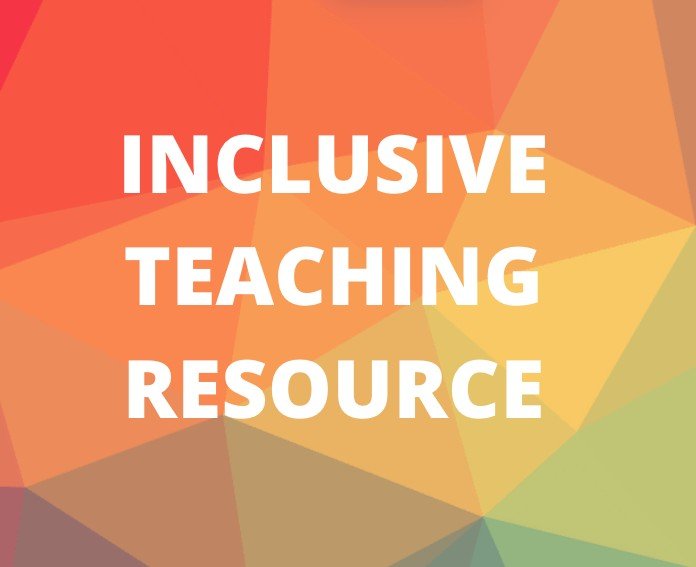Teaching Practices
Teaching Practices
Teaching Practices
In this section, the Inclusive Teaching Resource offers a wide range of recommended strategies for inclusive and equitable pedagogy with a focus on student agency and input.
You might browse the content below, or use the following table of contents to navigate to a particular suggested practice.
Student Engagement
Identify opportunities for students to actively engage in learning during class time.
Explanation and/or Examples
Provide discussion opportunities in large/small groups and pairs.
Integrate activities and discussions to support learning outcomes and learning styles.
Resources
“An Activity That Promotes Engagement with Required Readings, Even in Large Classes,” Ashley Harvey, Faculty Focus (Article)
“Increasing student motivation and participation,” Cornell University, Cornell University, Center for Teaching Innovation (Article)
15 Active Learning Activities to energize your next college class, Tricia Wenham (Article)
Student Agency
Give students a choice in how they respond to or engage with class material.
Explanation and/or Examples
Encourage engagement of course materials through multiple channels. For example:
- class discussion
- text-based communication
- small group interactions
- personal reflections
- demonstrations
- hands-on activities
Allow students to select communication channels that best reflect their access and ability, while still meeting the needs of the assignment.
Resources
Using Multiple Assessment Methods to Explore Student Learning and Development Inside and Outside of the Classroom, Peggy Maki (Article)
Valuing Student Input and Voice
Value students as contributors to the classroom experience.
Explanation and/or Examples
Provide different ways for students to give feedback on the instruction and materials (e.g., anonymous surveys, informal discussions).
Give opportunities for students to ask questions without being judged.
Support opportunities for students to share their own prior knowledge or expertise in classroom discussions (“funds of knowledge”).
Recognize the relevance and value of students’ funds of knowledge.
Structure discussions and other activities so that students from a variety of backgrounds feel comfortable speaking and participating. For example, use flexible but structured conversations prompts that ensure everyone has the opportunity to speak and to listen.
Encourage students to listen to others and reflect on their own experiences.
Resources
Calling on Students in Equitable Ways, Instructional Moves, Harvard University Graduate College of Education (Website)
The Funds of Knowledge Approach, Funds of Knowledge Alliance (Web page)
Exploring Cultural Concepts: Funds of Knowledge, National Center on Cultural and Linguistic Responsibility (PDF handout)
An Overview of Community Cultural Wealth: Toward a Protective Factor Against Racism. Nancy Acevedo and Daniel G. Solorzano. Urban Education (Journal article) https://doi.org/10.1177/00420859211016531
Funds of Knowledge: Theorizing Practices in Households, Communities, and Classrooms. Cathy Amanti, Norma Gonzalez, and Luis C. Moll, eds. (Book)
Growth Mindset
Encourage individual growth as a natural part of the learning process.
Explanation and/or Examples
Affirm that experimentation and making mistakes are vital parts of learning.
To address students’ varied learning needs, use differentiation to support students who are not yet meeting learning objectives and to challenge students who are exceeding course expectations.
Resources
Differentiated Instruction, in Educational Psychology, Nicole Arduini-Van Hoose
Reduce Barriers
Recognize and reduce barriers to learning for students from a wide variety of backgrounds.
Explanation and/or Examples
Identify potential challenges students might face in unique classroom spaces (labs, studios, field work) and provide options that allow those potential challenges to be overcome without explicit requests for accommodation.
Provide students with equitable opportunities for participating in collaborative work. For example, the meeting mode (virtual, in-person, etc.) may be a barrier to some students.Encourage the use of assistive technology or other digital tools that support students’ success.
Give overt instruction in how to complete tasks and provide successful examples.
Resources
Accessibility Concerns in Laboratories, Allison Kelly (Infographic)

Inclusive Teaching Resource Home
Return to the Inclusive Teaching Resource homepage.

Instructional Content
From assigning diverse readings to making space for student choice, the Instructional Content section supports building courses to serve students' diverse identities and interests.

Culture of the Community
Try one or more of these recommended approaches for building an inclusive classroom culture!

Policy
Visit the Policy section to learn more about designing inclusive and equitable classroom policies.

Assessment
Visit the Assessment section to learn about grading contracts, instructional alignment, and more recommendations for equitable grading and assessment practices.

Resources
Visit our curated list of resources to support inclusive teaching practices.
